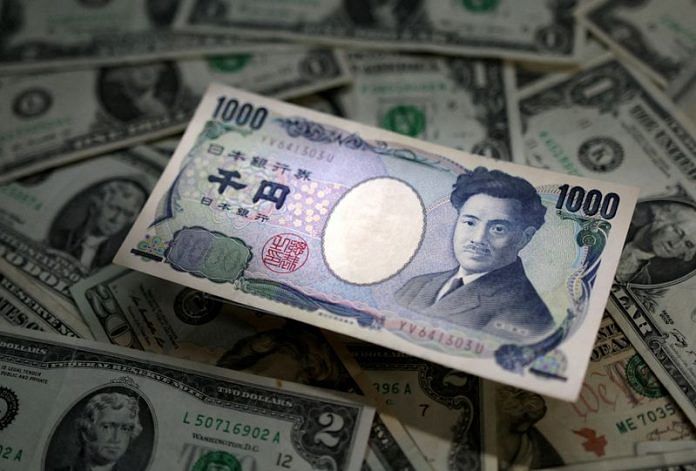By Rae Wee and Alun John
SINGAPORE (Reuters) -The yen tumbled on Tuesday after the Bank of Japan (BOJ) maintained its ultra-loose monetary policy, as expected, and more surprisingly did not signal a change was approaching, while the dollar drifted at the low end of its recent range.
The dollar and euro both climbed 1% on the yen, each set for its biggest daily gain since end October, with the greenback reaching 144.27 yen, and the common currency 157.68.
While the outcome was within market expectations, some investors were on the lookout for signs on whether the dovish central bank might signal an eventual move away from negative interest rates.
“Before the meeting, there were expectations for policy changes, including wording amendments in the statement,” said SMBC’s chief FX strategist, Hirofumi Suzuki.
Still, he said: “The movement of a weaker (yen) is unlikely to become a trend, partly because expectations remain for a policy revision for January-March next year.”
BOJ governor Kazuo Ueda BOJ told a press conference: “The prospects for (sustainably achieving our inflation target) are gradually heightening. But in terms of whether the threshold would be met, we’d prefer to look at more data.”
In the broader market, the risk-sensitive Australian and New Zealand dollars sat around their highest in nearly five months, amid buoyant sentiment on the prospect that the U.S. Federal Reserve could begin lowering rates next year.
The Aussie rose 0.23% to $0.6724, having peaked at $0.6736 in the previous session, its highest since July 31.
The kiwi rose 0.35% to $0.6233.
Minutes from the Reserve Bank of Australia’s December policy meeting showed on Tuesday that the bank considered hiking rates, but decided there were enough encouraging signs on inflation to pause for more data.
The pound rose 0.2% to 1.2674 and the euro rose 0.1% to $1.0936.
That left the U.S. dollar index little changed at 102.54, above last week’s four-week low of 101.75 but still down over 4% since early October, as the Fed, at its meeting last week, gave succour to investors expecting rate cuts in 2024.
While some Fed officials have pushed back against market expectations of how soon the Federal Open Market Committee (FOMC) could cut rates, those comments have done little to sway market pricing and stem the greenback’s decline.
Chicago Fed President Austan Goolsbee on Monday said the Fed is not pre-committing to cutting rates soon or swiftly, and the jump in market expectations that it will do so was at odds with how the U.S. central bank functions.
“It may take (the) PCE inflation or comments from FOMC Chair (Jerome) Powell to encourage market participants to delay their expectations for the start of the rate cut cycle,” said Joseph Capurso, head of international and sustainable economics at Commonwealth Bank of Australia.
A reading on the core Personal Consumption Expenditures (PCE) price index – the Fed’s preferred measure of underlying inflation – is due this week, and may provide clarity on whether inflation has slowed enough for the Fed to begin easing policy next year.
(Reporting by Rae Wee in Singapore and Alun John in London; Editing by Christopher Cushing and Bernadette Baum)
Disclaimer: This report is auto generated from the Reuters news service. ThePrint holds no responsibilty for its content.



